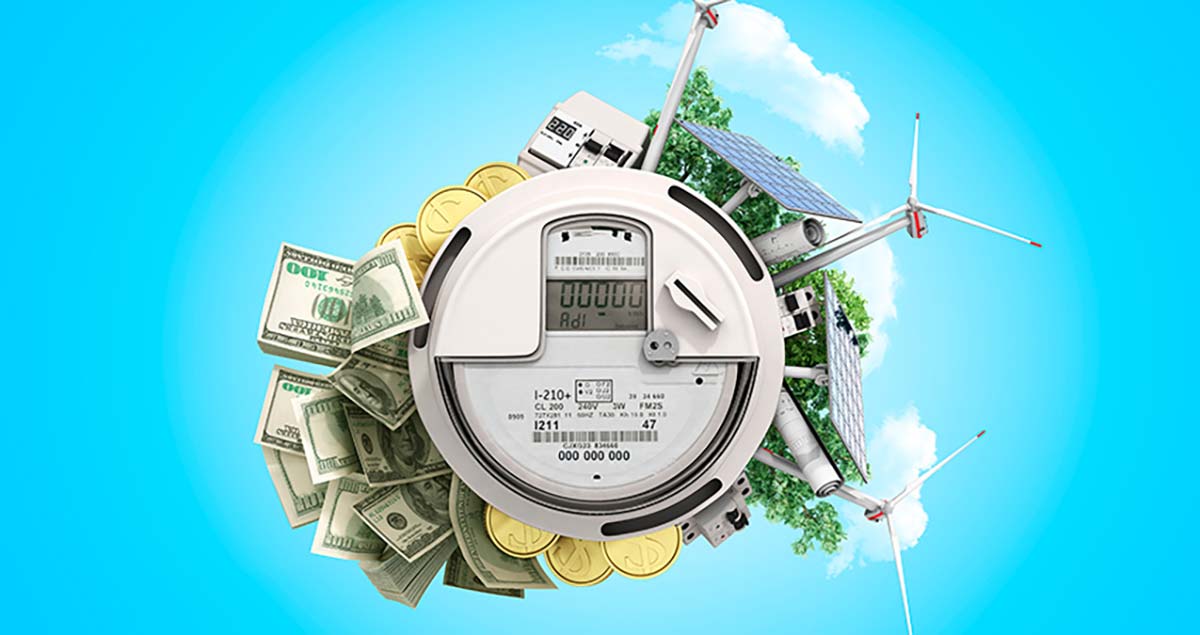Many consumers who are thinking about going solar have heard the term “net metering” but aren’t sure what it means.
What is Net Metering?
Put simply, net metering is a utility billing mechanism available in most states that offers a credit to residential and business customers who are making excess electricity with their solar panel systems and sending it back to the grid.
How Does Net Metering Work?
When you have a rooftop solar system, it can often generate more electricity than you consume during daylight hours. With net metering, the homeowner is only billed for the “net” energy used each month, that is, the difference between the energy produced by the solar power system and the energy consumed by the house over the monthly billing period.
When your house or business is net-metered, you’ll see the meter run backwards, and that means, depending upon local policies, you may get a credit to hedge against the electricity you use from the grid when it’s not sunny or at nighttime. You are then billed only for your “net” energy use. The excess energy generated gets put back to the grid for your neighbors to use.

The Benefits of Net Metering (NEM)
Net metering can save homeowners hundreds of dollars on their utility bills every year, so it’s a good reason to make the money-saving choice and go solar sooner rather than later. There’s another benefit from net metering. Since your solar system is generating electricity near the point where it will be used, this reduces strain on the grid’s distribution and trans-mission infrastructure and minimizes energy loss from sending voltage many miles from the nearest power plant. While some claim that net metering represents an unfair burden on non-solar electricity customers, many net metering cost-benefit studies have found the opposite to be true.
Does My State and Utility Offer Net Metering?
The original retail net metering policies were designed for areas with low solar adoption, and many states have started to adopt policies which are moving away from NEM. California, New York, and other states seeing rapid increases in the amount of solar that’s being installed, there will be changes coming in the next few years. California has already instituted what’s being called “Net Metering 2.0,” and at least one study has shown how there are reasons to be optimistic about the new policies compared to the original retail net metering approach used in the Golden State.
In 2016 the state of Indiana updated their net metering policy such that all homeowners who have their solar systems installed by 2022 will have NEM until 2032, all homeowners who had their system installed prior to 2016 will be grandfathered for a period of 25 years. All systems installed after 2022 will have a net metering rate will be wholesale rate + 25%. In Indiana this policy only affects customers who are NIPSCO, IPL, Duke, Vectren, or I&M. For all those who have a Rural CO-OP or municipal utility, they do not have to offer NEM, and most do not. If you live in these areas, you may not have NEM, but the value of battery system just became much more attractive.
To learn more about net metering and other related policies in your state, check out the Database of State Incentives for Renewables & Efficiency (DSIRE). Another resource for information about net metering, pro-solar energy policies and consumer advocacy programs is the Solar Energy Industries Association (SEIA).
There are many discussions taking place across the country on how to evolve the current programs. Net metering updates may factor in such things as a more accurate valuation of the solar energy flowing into the distribution grid; rate structures that charge more for electricity at certain times of the day, sometimes called Time of Use (TOU rate), charges for peak demand, or look at where on the grid the excess electricity is being generated; credits at a wholesale rather than retail rate; and the impact of residential solar energy storage batteries. If you are already benefiting from net metering for your solar system, and your state hasn’t adopted NEM 2.0, you likely will be shielded from any significant reductions — you will be “grandfathered” in, regardless of any changes that may impact the rate design of new solar customers.

Getting to Net Zero
Many people who have net metering, decide to go down the road of a obtaining a solar system to give them a Net Zero energy home. This simply means that your home is utilizing your utility’s net metering program, and your solar system provided all the energy that is needed to offset all the power on an annual basis. This is attractive as it will offset your entire annual energy bill, minus the minimum charge for being connected to the grid, and offset your carbon footprint. This give you the comfort and security that you are doing your part to help promote a cleaner future for yourself, and the world at large.
As mentioned above, there are different rules and stipulations for net-metering depending on your specific utility. And in some cases, those rules are changing very soon. At Rectify Solar, our energy advisors will explain how those changes could impact the type of system you decide to install. Plus, it is important to develop a strategic plan for the future so that you are not in a position to have to change up the whole system when those rules change.





